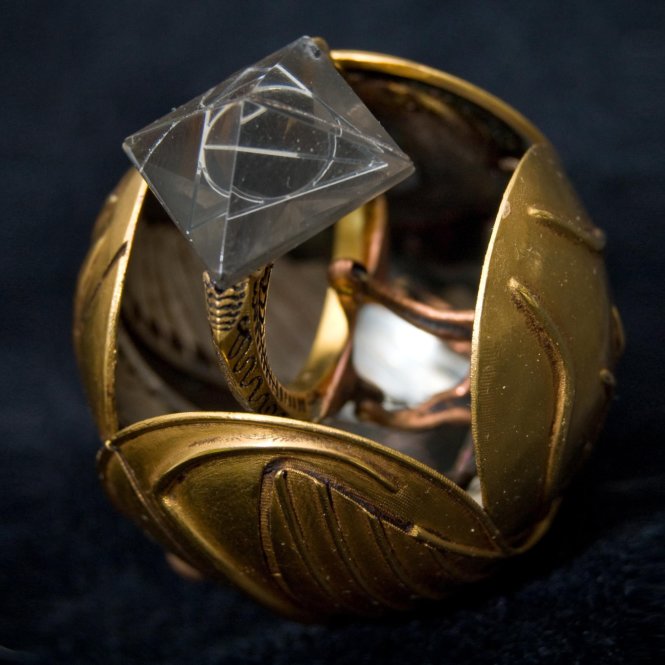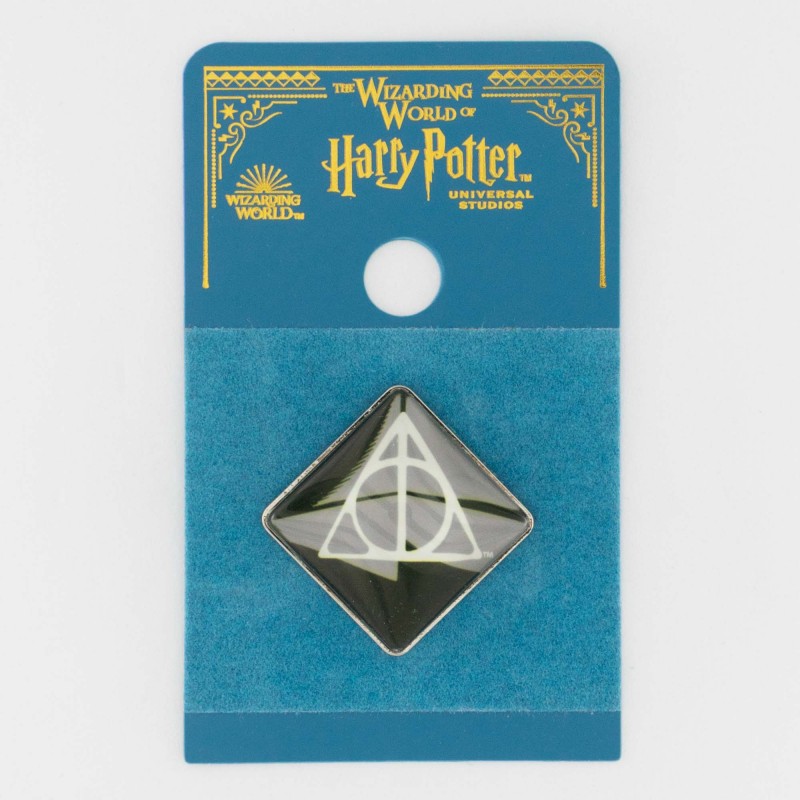Why Did Harry Potter Drop The Resurrection Stone? The Untold Story
Ever wondered why Harry Potter made the bold decision to drop the Resurrection Stone? Well, buckle up, because we’re diving deep into the wizarding world to uncover this mystery. This isn’t just about a rock—it’s about sacrifice, love, and the choices that define us. So, grab your wand, or maybe just a cup of coffee, and let’s explore why Harry did what he did.
Harry Potter is more than just a boy who lived. He’s a symbol of hope, courage, and the power of love. But even the Chosen One had to make tough choices, and one of the biggest was letting go of the Resurrection Stone. It’s not just a plot twist; it’s a lesson in letting go and embracing the inevitable.
In this article, we’ll break down the reasons behind Harry’s decision, explore the significance of the Resurrection Stone, and delve into the philosophical undertones that J.K. Rowling masterfully wove into her story. So, whether you’re a hardcore fan or just curious, stick around because there’s a lot to unpack here.
Understanding the Resurrection Stone
Let’s start with the basics. What exactly is the Resurrection Stone? It’s not just some random magical artifact. This stone is one of the three Deathly Hallows, which are legendary objects in the wizarding world. According to legend, these Hallows have the power to cheat death. The Resurrection Stone, in particular, is said to bring back the dead.
Now, you might be thinking, “Who wouldn’t want that?” But here’s the catch—it doesn’t bring people back to life in the way you’d expect. Instead, it summons their spirits, allowing you to speak with them one last time. Sounds amazing, right? But as Harry learned, sometimes the hardest thing to do is let go.
Harry Potter’s Journey with the Resurrection Stone
Harry’s encounter with the Resurrection Stone wasn’t just a random event. It was a pivotal moment in his journey. After retrieving the stone from the Snitch left to him by Dumbledore, Harry faced a dilemma. Should he use it to bring back his loved ones, or should he let them rest in peace?
Here’s the kicker: Harry chose to use the stone, but not for selfish reasons. He summoned the spirits of his parents, Sirius, and Lupin to give him strength before confronting Voldemort. This act wasn’t about bringing them back permanently; it was about finding solace in their presence one last time.
Why Did Harry Drop the Resurrection Stone?
So, why did Harry ultimately decide to drop the stone? Let’s break it down:
- Acceptance of Loss: Harry realized that clinging to the past wouldn’t bring him peace. He had to accept the finality of death and move forward.
- Breaking the Cycle: Using the stone could create a dangerous cycle of dependency. Harry understood that true strength comes from letting go.
- Honoring the Dead: By letting the stone go, Harry honored the memories of those he loved. He chose to remember them as they were, rather than as shadows of their former selves.
It’s a powerful message about the importance of moving on and embracing life, even in the face of loss.
The Philosophy Behind the Decision
Harry’s choice to drop the Resurrection Stone is deeply rooted in philosophy. Think about it—life and death are two sides of the same coin. By holding onto the stone, Harry would have been denying the natural order of things. Instead, he embraced the cycle of life, showing incredible maturity and wisdom beyond his years.
This decision aligns with the broader themes of the Harry Potter series: love, sacrifice, and the acceptance of mortality. It’s not just about defeating Voldemort; it’s about understanding what truly matters in life.
Biography of Harry Potter
Before we dive deeper, let’s take a moment to revisit Harry’s story. Below is a quick overview of his life:
| Full Name | Harry James Potter |
|---|---|
| Birth Date | July 31, 1980 |
| Parents | James Potter and Lily Evans |
| Significant Other | Ginny Weasley |
| Children | James Sirius, Albus Severus, and Lily Luna Potter |
| Profession | Auror (post-Hogwarts) |
Harry’s life is a testament to resilience and bravery. From being the Boy Who Lived to becoming a symbol of hope, his journey is nothing short of inspiring.
The Impact of the Resurrection Stone on the Story
The Resurrection Stone plays a crucial role in the final book of the series, “Harry Potter and the Deathly Hallows.” It’s not just a plot device; it’s a symbol of the struggles and sacrifices that define Harry’s character. By choosing to drop the stone, Harry demonstrated that true strength comes from within, not from external power.
This decision also sets the stage for the series’ conclusion. It shows that even the most powerful tools can’t replace the importance of love, friendship, and courage. In a world where death is inevitable, Harry’s choice to let go is a powerful reminder of what truly matters.
What Does This Mean for Fans?
For fans, Harry’s decision to drop the Resurrection Stone is a moment of reflection. It challenges us to think about our own relationships with loss and grief. How do we move forward when faced with the inevitable? Harry’s actions provide a blueprint for resilience and acceptance.
Historical Context and Symbolism
The Resurrection Stone isn’t just a product of J.K. Rowling’s imagination. It draws inspiration from various mythologies and legends throughout history. The idea of bringing back the dead has fascinated humanity for centuries, and Rowling masterfully incorporates this theme into her story.
But why is this important? Understanding the historical context adds depth to the story. It shows that the themes of life, death, and sacrifice are universal. Whether you’re reading about Harry Potter or exploring ancient myths, the core messages remain the same.
What Do Experts Say?
According to literary experts, Harry’s decision to drop the Resurrection Stone is one of the most significant moments in the series. It highlights the importance of personal growth and the acceptance of mortality. As Professor Albus Dumbledore once said, “It is the unknown we fear when we look upon death and darkness, nothing more.”
This quote perfectly encapsulates Harry’s journey. By letting go of the stone, he faced his fears and embraced the unknown. It’s a powerful lesson that resonates with readers of all ages.
Why Is This Relevant Today?
In today’s fast-paced world, where we often seek quick fixes and instant gratification, Harry’s decision serves as a reminder of the importance of patience and acceptance. It encourages us to embrace life’s challenges and learn from them, rather than trying to escape them.
Common Misconceptions About the Resurrection Stone
There are a few misconceptions about the Resurrection Stone that need addressing:
- It Doesn’t Truly Bring People Back to Life: The stone only summons their spirits, not their physical forms.
- It’s Not a Magical Cure-All: Using the stone can lead to emotional turmoil and dependency.
- It’s Not About Power: The true value of the stone lies in its ability to provide closure, not control.
Understanding these nuances is key to appreciating the depth of the story.
Conclusion: Why Harry’s Choice Matters
Harry Potter’s decision to drop the Resurrection Stone is more than just a plot point. It’s a powerful lesson about life, love, and the choices that define us. By letting go of the stone, Harry showed incredible strength and maturity, proving that true heroism comes from within.
So, what can we learn from Harry’s story? Embrace life, accept loss, and find strength in the memories of those we love. It’s a message that resonates with readers of all ages and backgrounds.
Now, it’s your turn. Share your thoughts in the comments below. Did Harry make the right choice? What would you have done in his place? Let’s keep the conversation going!
Table of Contents
- Understanding the Resurrection Stone
- Harry Potter’s Journey with the Resurrection Stone
- Why Did Harry Drop the Resurrection Stone?
- The Philosophy Behind the Decision
- Biography of Harry Potter
- The Impact of the Resurrection Stone on the Story
- Historical Context and Symbolism
- What Do Experts Say?
- Common Misconceptions About the Resurrection Stone
- Conclusion: Why Harry’s Choice Matters


